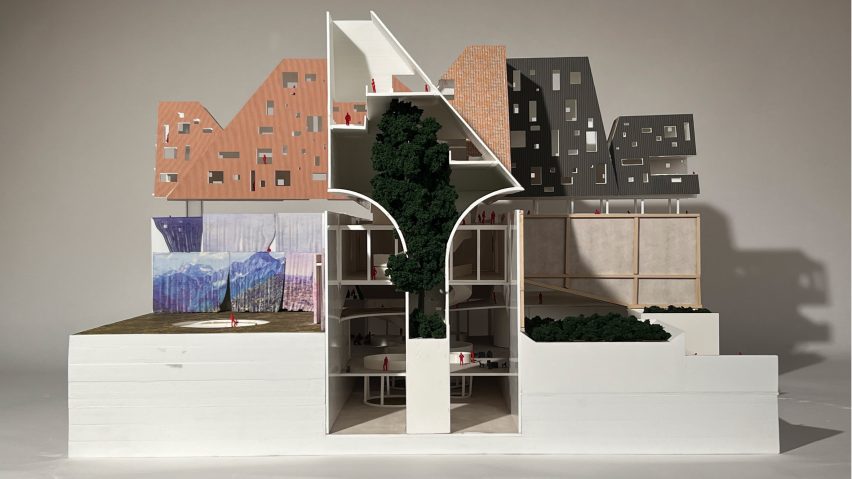
UCLA presents 12 student architecture projects
Dezeen School Shows: a project that presents a future where society has embraced a diet of cultured meat, and a new type of living infrastructure integrating energy, water, housing, agriculture and traffic systems are included in Dezeen's latest school show by students at UCLA.
Also featured is a planning scheme that responds to the threat of wildfires and a utopian future where mining machinery is turned into a green theme park.
UCLA
Institution: UCLA
School: UCLA Architecture and Urban Design
Courses: Master of Architecture, Master of Science in Architecture and Urban Design, and Bachelor of Arts in Architectural Studies
Tutors: Hitoshi Abe, Cristóbal Amunátegui, Kutan Ayata, Katy Barkan, Matt Conway, Morgane Copp, Dana Cuff, Kevin Daly, Neil Denari, Samaa Elimam, Yara Feghali, Benjamin Freyinger, Sarah Hearne, Georgina Huljich, Mariana Ibañez, Jeffrey Inaba, Julia Koerner, Max Kuo, Ayala Levin, Alan Locke, Todd Lynch, Greg Lynn, Laure Michelon, Narineh Mirzaeian, Michael Osman, Valeria Ospital, Güvenç Özel, Martin Paull, Jason Payne, Garrett Ricciardi, Heather Roberge, Natasha Sandmeier, Mohamed Sharif, Roger Sherman, Nathan Su, Raha Talebi and Enrique Walker
School statement:
"UCLA Architecture and Urban Design's exceptional faculty teaches students to engage in the world around them, to see ideas as productive forms of response and to leverage design and writing as expressions of newly curated perspectives.
"Through rigorous inquiry, we interrogate contemporary urban issues and propose possible futures with equal measures of expertise, optimism and vision.
"These ideas are grounded in a critical engagement with the history and theory of architecture and the future contingencies of contemporary culture, and an engagement with the geographic, cultural and urban contexts of Los Angeles and Southern California.
"As part of the UCLA School of Arts and Architecture, our department is in close contact with other forms of creative cultural production including the UCLA Departments of Art, Design Media Arts, and World Arts and Cultures/Dance, as well as UCLA's public arts institutions – UCLA's Center for the Art of Performance and the Hammer and Fowler Museums."
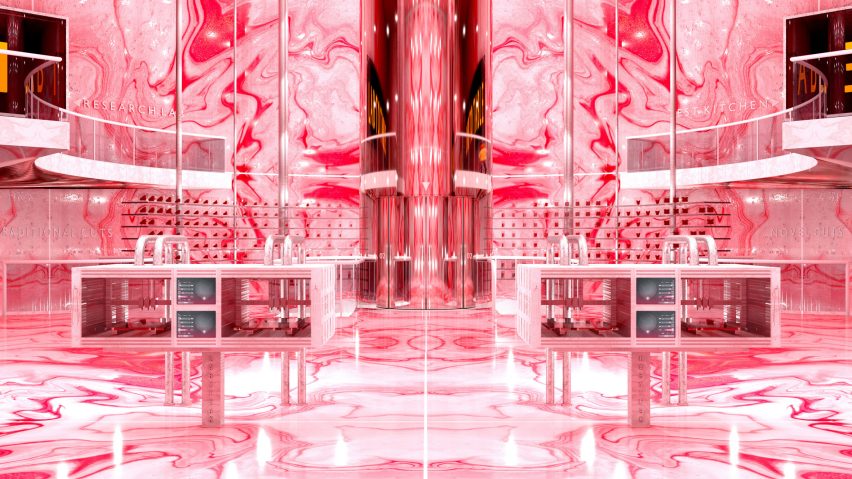
Meat Culture: From Lab to Table by Akana Jayewardene and Sunay Rajbhandari
"We imagine a future in which Los Angeles has moved away from its reliance on conventional meat sources and toward a diet of cultured meat and insect-based protein.
"As old habits and desires linger, the graphic and grotesque character of meat culture's troubled past encounters the clinical sensibilities of scientific research and the culinary arts to establish new aesthetic qualities.
"As a result, common assumptions become unstable and deeply ingrained values are put into question.
"What do we accept as real and what do we reject as artificial? What is natural and what is synthetic?"
Students: Akana Jayewardene and Sunay Rajbhandari
Course: Future (Hi)Stories
Tutor: Kutan Ayata
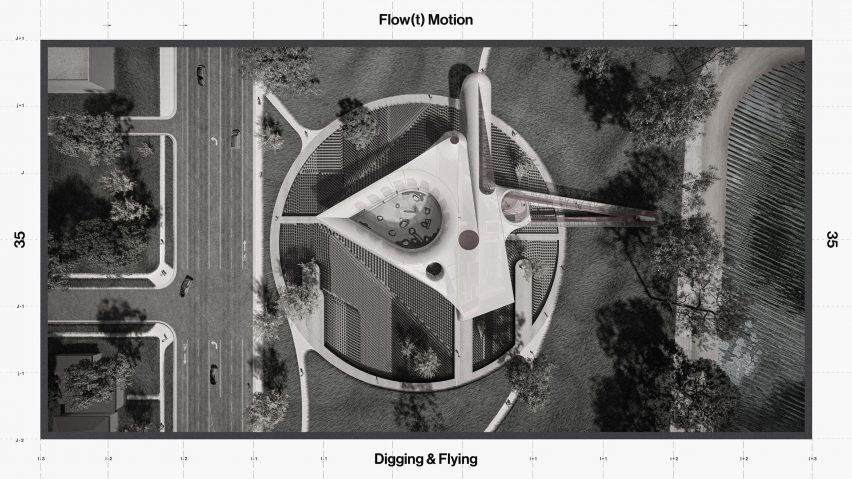
Flow(t) Motion by Nate Waddell
"A fluid curve, or a line with curvature between two moments can be understood as the mark of transition or gradient between two points of control – otherwise understood as the event between action and reaction.
"In fluid dynamics, these types of curves are used analytically or empirically to determine performance properties of an object met with a force or vice versa.
"Flow(t) Motion is suspended between the domains of a priori and posteriori.
"It takes objective truths and subverts them to create perceived architectural space and experience through a developed toolkit of curves, actions and reactions."
Student: Nate Waddell
Course: Digging and Flying
Tutor: Neil Denari
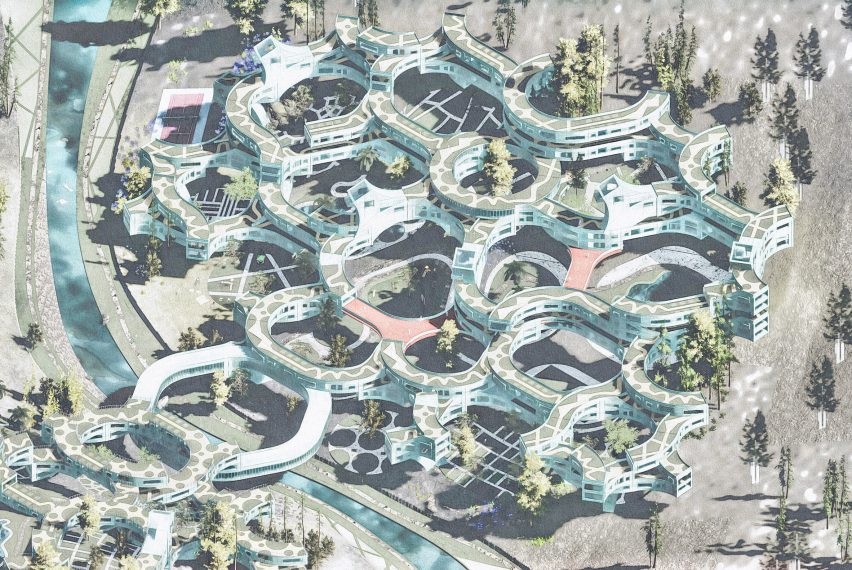
Resort Urbanism by Jichu Li, Deshun Liu, Xinyu Tian and Xinhua Wei
"Wildfires in urban areas are occurring with greater frequency and burning more acres of land, as witnessed by year after year reports of 'The Worst Fire Season Ever.'
"Instead of hoping to naively protect buildings from fires, we're trying to minimise the cycle of social vulnerability caused by fire disasters with resilient typologies.
"Cloaked as a resort community, this multi-unit prototype aims to counter the perilous expansion of single-family development into the Wildland Urban Interface while giving retirees amenities that double as emergency response infrastructure."
Students: Jichu Li, Deshun Liu, Xinyu Tian and Xinhua Wei
Course: IDEAS: Urban Strategy Studio
Tutors: Jeffrey Inaba and Shaun McCallum
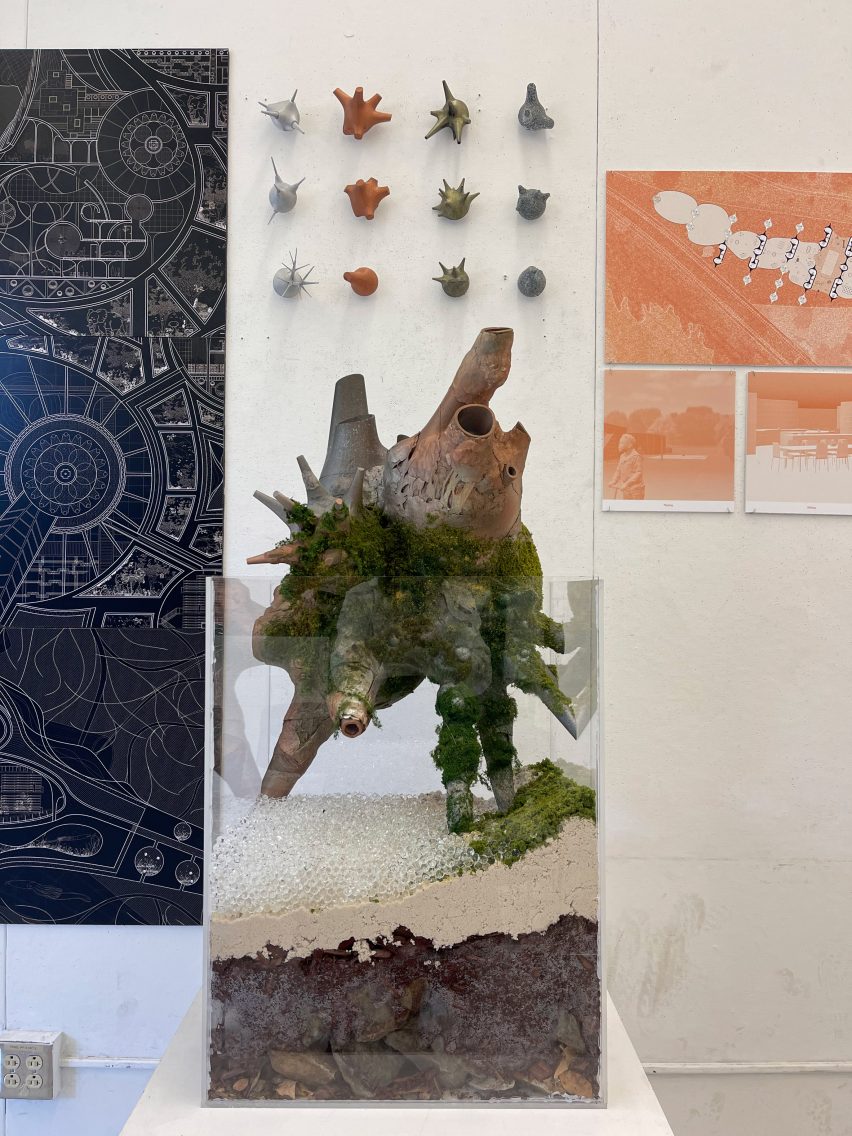
HousINC: Future Domestic Urban Living Infrastructure by Kaibo Wang, Kaiwen Yang and Ziwei Hou
"HousINC is a new type of domestic urban living infrastructure integrating energy, water, housing, agriculture and traffic systems together.
"It is not a building, it is not a block, it is not a neighbourhood – but something in between.
"HousINC is considered not only a habitat for humans, but also a paradise for nonhumans – asking for resources from the environment, as well as giving them back.
"HousINC is a mechanical model agent evolving from the smart city concept through which we explore further the possibilities of how architecture manages resources and responds to the current urban challenges."
Students: Morgane Kaibo Wang, Kaiwen Yang and Ziwei Hou
Course: Episode 5: Domestic (R)Evolutions
Tutor: Mariana Ibañez
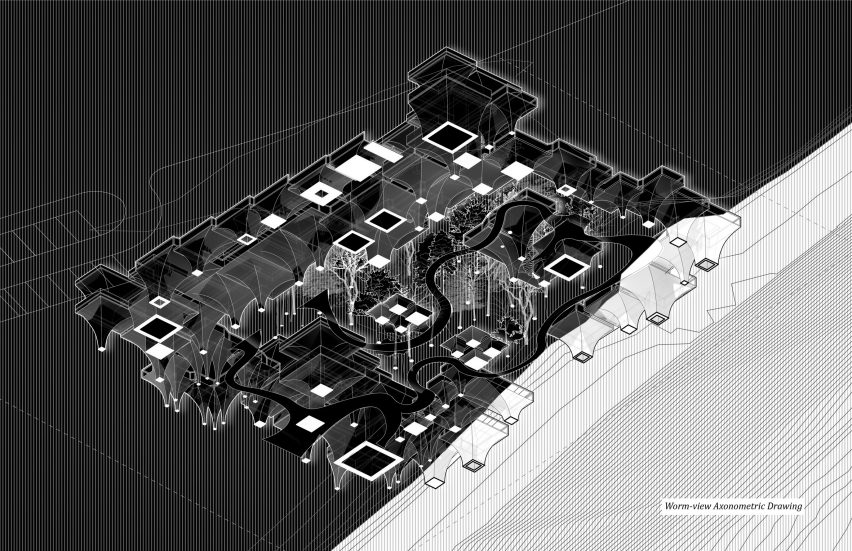
Open Field by Zirui Wang
"The project is situated in a field setting and requires careful placement to ensure that it takes up a minimally-sized footprint, in the interest of respecting the wetland.
"The design is orientated based on surrounding plants – providing an open space where plants could grow there naturally, offering different viewing experiences for people observing them, and condensing the building unit so it casts minimal shadows on the plants.
"Finally, a column taxonomy that creates a field condition in the site, with plants growing in and filling the central void."
Student: Zirui Wang
Course: Building Design Studio
Tutor: Yara Feghali
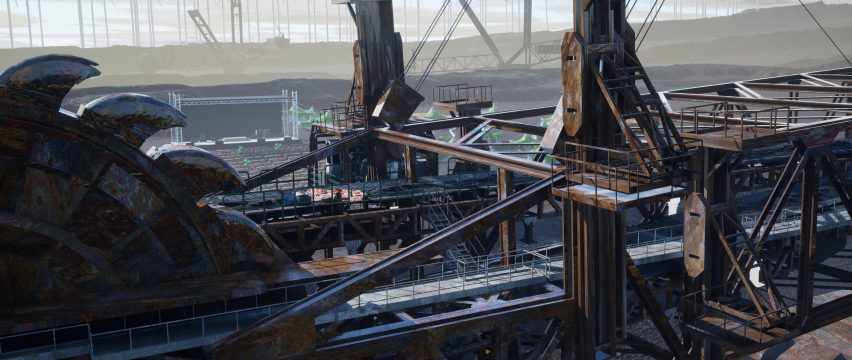
Baggerland: A Greenwashing Experience by Takin Daneshmir, Willie Wu and Luying Xu
"The project centres on a short film imagining a fictional future. Baggers are huge machines built by the German coal industry for surface mining.
"They eat away land and create massive, unnatural landscapes on earth at a rapid speed.
"However, as Germany goes green, all coal-mining activities will stop by the year of 2038 and the sites will be abandoned.
"The owner of the mines has already rebranded themselves as a 'green company' producing sustainable energy.
"We are going to capitalise on this greenwashing trend and turn the former coal mining site to a theme park to celebrate everything green."
Students: Takin Daneshmir, Willie Wu and Luying Xu
Course: IDEAS: Entertainment Studio
Tutors: Natasha Sandmeier and Nathan Su
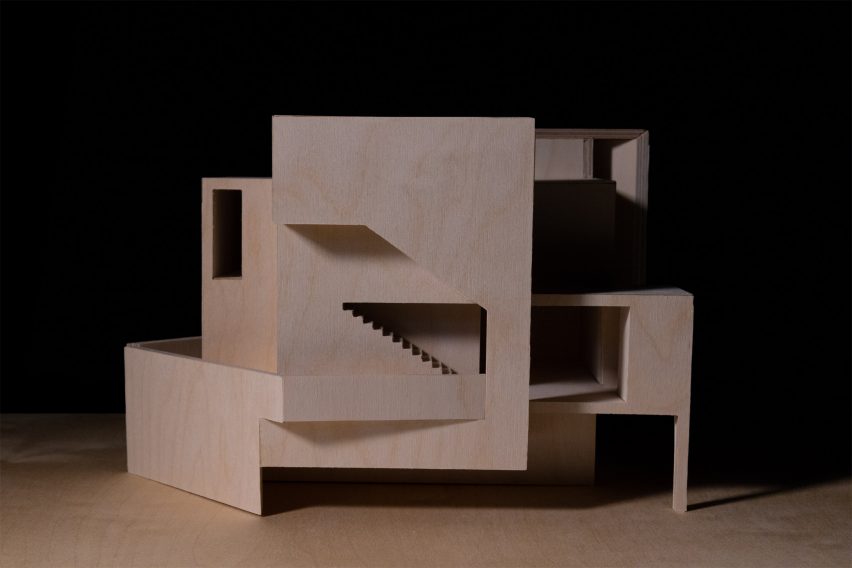
Nests and Thresholds by Jacob Dunsmore
"By imagining two buildings nested one inside the other, the studio and project interrogate not only the threshold between the building and the world, but within the many thresholds that reside within the architectural object itself.
"The current indeterminacy between living and working, brought about both by crisis and our increasingly 'seamless' and 'interconnected' work-anywhere and live-everywhere model, has radically altered our understanding of boundaries.
"Binary distinctions between living and working, inside and outside, private and public, individual and collective, have become difficult to pin down.
"Arguably, adjudicating spatial boundaries is architecture's most fundamental role; how then has this blurring problematised our understanding of space?"
Student: Jacob Dunsmore
Course: House to Housing
Tutor: Katy Barkan
Morphi: Terraforming the Cooper Basin by Danai Sougkara, Sanya Vithalkar and Srujana Bhoopanam
"Morphi has great potential to introduce a new kind of urban zoning where industrial facilities, eco-tourism and wildlife are combined.
"In order to serve the planet's need for energy but at the same time leaving a positive footprint on it, Cooper Basin acts as a testing ground for new and renewable technologies, like large scale algal biomass and solar power.
"The site functions as an urban machine, operated by artificial intelligence and robots with minimal to no agency of the humans."
Students: Danai Sougkara, Sanya Vithalkar and Srujana Bhoopanam
Course: IDEAS: Technology Studio, "Maximum City"
Tutors: Güvenç Özel, Laure Michelon and Tucker van Leuwen-Hall
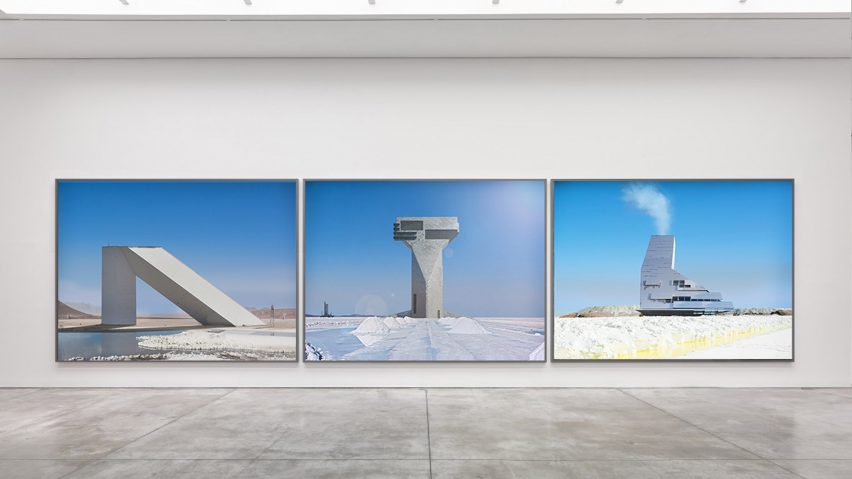
National Park by Morgan Jacobs and Xavier Ramirez
"This project presents a speculative fictional narrative set from 2021 to 2061 that examines the potential outcomes of landscape and architecture through multiple mediums and their consequences.
"Taking on the topic of lithium mining, Nevada and its rich geology become the site while the infrastructure of its landscape and futures of energy production and storage become the architecture.
"With the shift toward green energy, resources don't stop being consumed – they merely shift from one method of earth extraction to another.
"This future proposes that through the combative relationship of environmentalists and private and federal enterprises a new national park begins forming across Nevada where the production and recreation of landscape begins to coexist as one."
Students: Morgan Jacobs and Xavier Ramirez
Course: Future (Hi)Stories
Tutor: Kutan Ayata
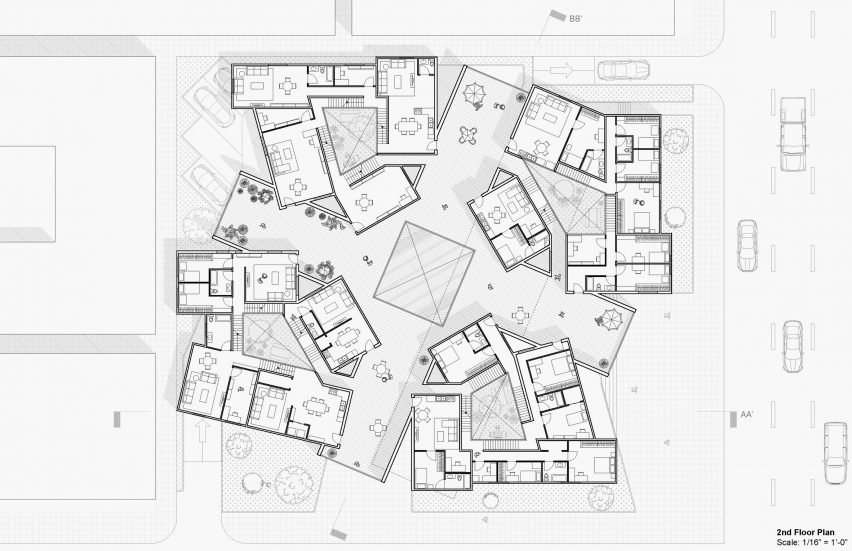
New Hous(ing) by Zongli Li
"This studio and project asks what it means to live in a 'house' and what it means to live in 'housing', and foregrounds the development of new sensibilities about what should be preserved or renewed as we move from the one to the many.
"Working at an in between scale of 20 residential units and public programs, the project defines communities that are neither totally intimate nor totally estranged, investigating the way living together can contaminate, disrupt and reinvent ideas for housing.
"As the desire for the single-family house becomes increasingly untenable, the transition from the house to housing is in need of urgent reconsideration."
Student: Zongli Li
Course: House to Housing
Tutor: Katy Barkan
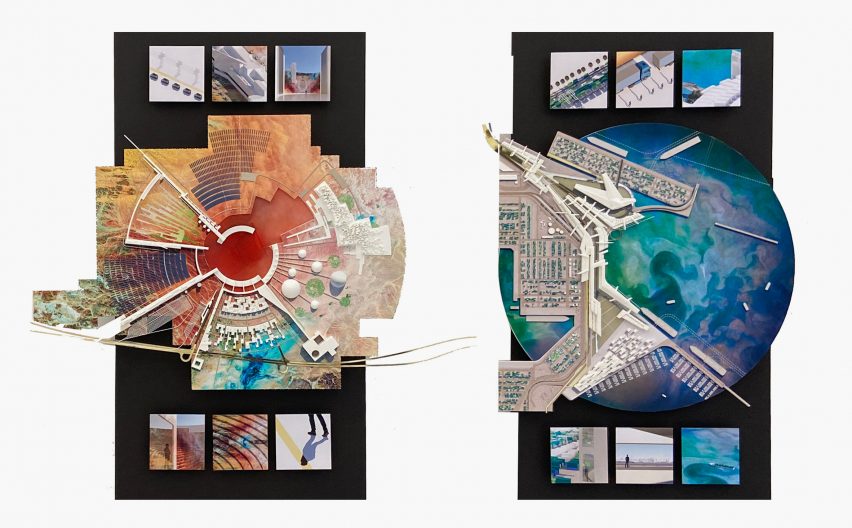
The Story of the Line by Steven Katz and Hongye Wu
"By 2050, the United States will have a robust industry of rare earth mining and a new domestic supply chain.
"The connective lines needed to support this new territory, from extraction and production to distribution, is the speculation of this project.
"Sites of extraction are points on a line of a supply-chain system that removes material from a distant location and relocates it to an immediate location in the form of architecture.
"Our proposal speculates on the reclaiming of these points of extraction by inhabiting these sites into a new territory of domestic space."
Students: Steven Katz and Hongye Wu
Course: Episode 5: Domestic (R)Evolutions
Tutor: Mariana Ibañez
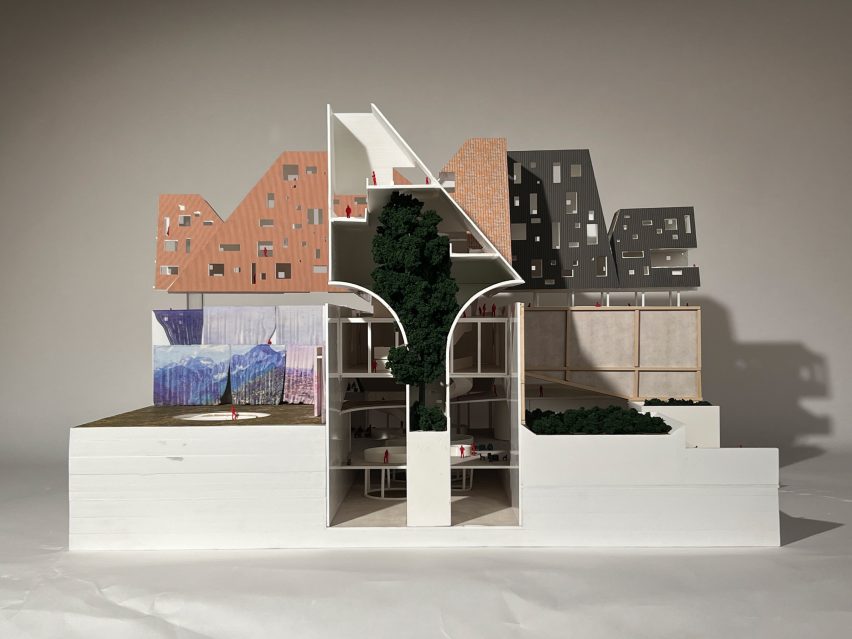
Future Histories: LA's Film Industry by Morgane Copp and Wei Qiu
"We speculate on the future of abandoned sound stage typologies of movie studios in Los Angeles due to the emerging technologies for digital scene-making, which will eventually render the currently required physical spaces obsolete.
"Instead of imagining a clean slate to exercise yet another version of tabula rasa towards a generic urban patterning, the project speculates on an alternative form of urbanism that challenges present norms and assumptions.
"By flipping the figure ground, in essence removing the roof of the obsolete sound stages, and building program in between these containers, we imagine a new urban fabric."
Students: Morgane Copp and Wei Qiu
Course: Future (Hi)Stories
Tutor: Kutan Ayata
Partnership content
This school show is a partnership between Dezeen and UCLA. Find out more about Dezeen partnership content here.